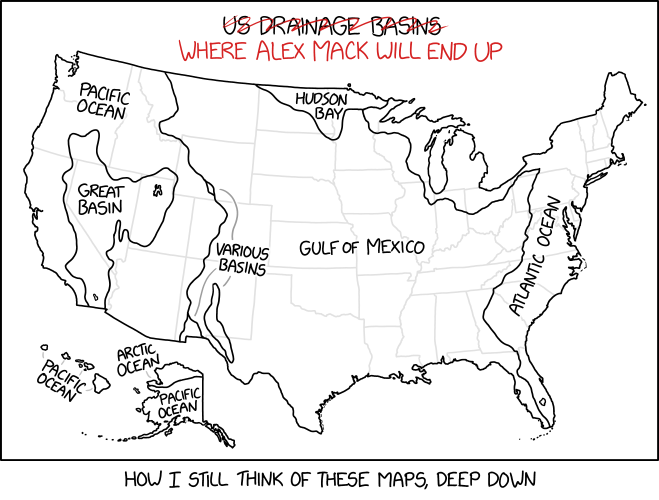
Smithsonian magazine takes a look at the ocean drainage basin maps of Robert Szucs, whose work we first saw in 2016. A lot has happened since then: he’s since produced hundreds of maps (and variations thereof) of the ocean drainage basins of various regions, countries and continents, and sells prints on his Grasshopper Geography website. The ocean drainage maps operate at a less precise level than the river basin maps, but there are plenty of examples of both. [MetaFilter]
Previously: River Basins in Rainbow Colours.






